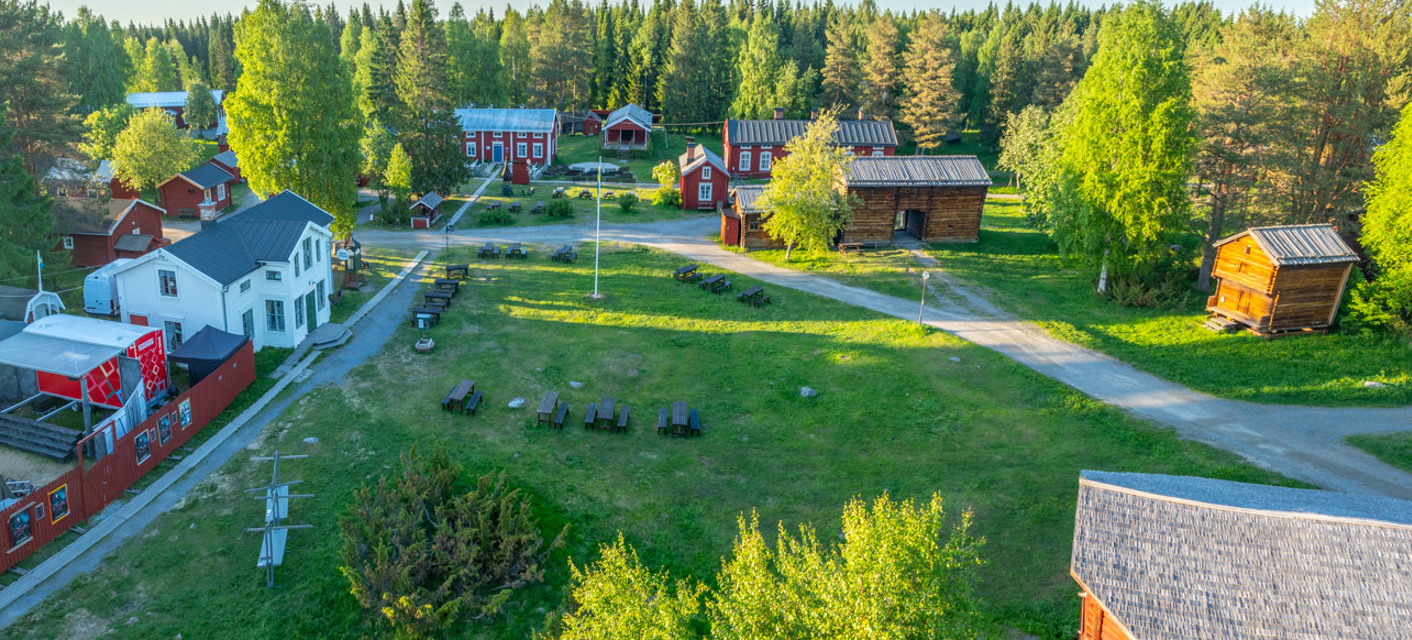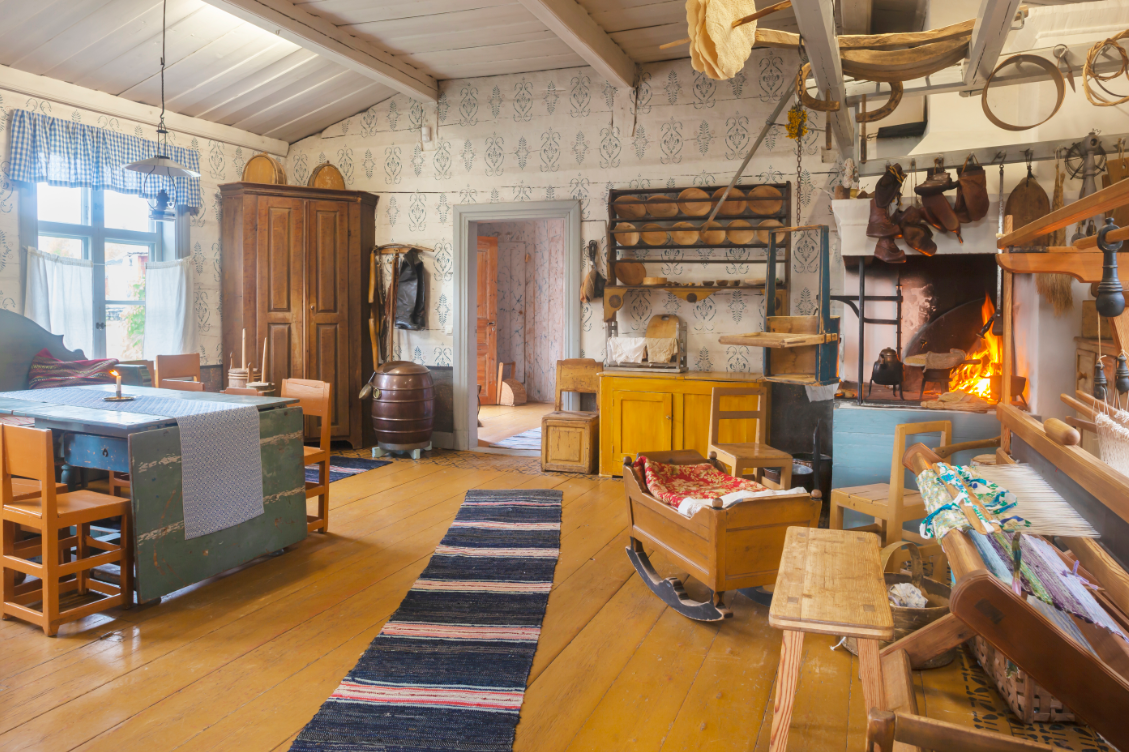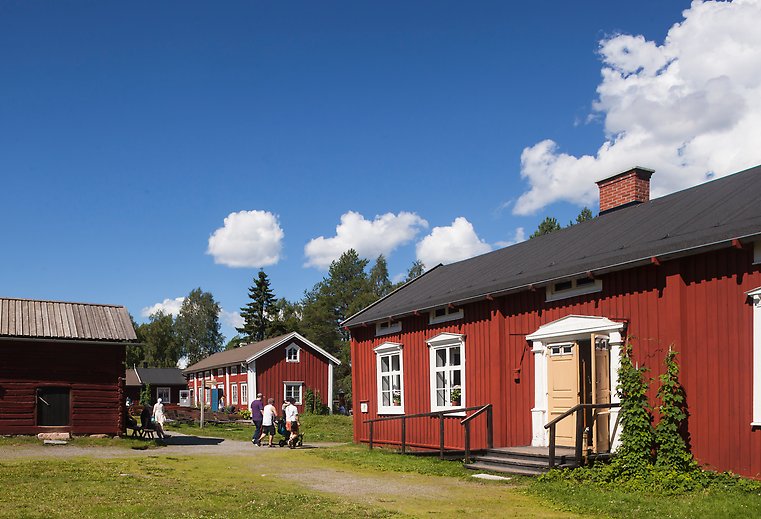At the open-air museum Hägnan you can learn more about the living conditions of the rural population on the countryside in Norrbotten County, from the late 18th Century to the mid 20th Century.
The outdoor area is open to the public all year round. The museum farmsteads and the country store are only open during the summer and at specific events during the winter.
Click here to see our opening hours.
The history of Hägnan
Were you aware that the open-air museum Hägnan was initially located on Gültzauudden in central Luleå? And that the move to Gammelstad was not completed until the 1970s? You can read more about Hägnan’s exciting history on this page.
In 1918, the open-air museum was established on Gültzauudden, where it was run by Norrbotten Country’s local history association as a Norrbotten Skansen. By 1921, at the time of Luleå’s 300th anniversary, there were about ten buildings and a restaurant located here. During the 1920s and 1930s, the place had its heyday, but the visitor numbers fell and for the whole year of 1965 the open-air museum had only 797 visitors.
Something had to be done and the operators of the museum were faced with a choice of the path to take forward. So the question was raised: Should the open-air museum be moved or perhaps closed down? At this time the open-air museum was managed by the Norrbotten museum, and Harald Hvarfner who was county museum director began looking for a new location for the open-air museum operations. Harald quickly saw the benefits of moving the open-air museum to Gammelstad, where the church town was already attracting many tourists. In addition, Gammelstad was a more natural and historically credible place, plus there was the possibility to place it all on the grounds of the old rectory.
A better location could not have been chosen
With the support of the Swedish National Heritage Board, the move began, which was completed in the early 1970s. A better location could not have been chosen, given the development of the museum that was to come. Today, the open-air museum is located between two UNESCO classified environments: The World Heritage Site Gammelstad Church Town, which is protected by the World Heritage Convention, and the Gammelstadsviken Nature Reserve which is also a Natura 2000 site, included on UNESCO's list of wetlands of international Importance worthy of protection.
The open-air museum was built in Gammelstad as a Norrbotten row village, a linear settlement characterised by rows of houses situated along a linear object. The farms were placed in a row, with the front facing the church town and south. The location of the country store deliberately breaks the pattern; here it is the customer and the road that is the most important focus for the location. The croft, which was customary for this type of building, is located on the outskirts of the village.

The name “Hägnan” saw the light of day
The name Hägnan was given to the open-air museum based on a name competition that was held after the move. It is connected with the fact that the land where the open-air museum is now located used to be called Prästhägnan and belonged to the rectory.
Until 2006, the emphasis was on constructing new environments and the open-air museum received more and more buildings. Today the open-air museum consists of about 50 old buildings and you can see and experience different time periods here. In the croft there is from the 1780s, Storgården shows what a prosperous farmstead might look like in the 1880s, in the Peri-Hanscha farm it is the 1920s; and in the country store one gets a glimpse of the 1940s. In addition to these courtyard environments, the open-air museum also has a café, a stage, two dance floors, and several other buildings.
Until 1992, the open-air museum belonged to Norrbotten Museum. After that the Municipality of Luleå’s Culture and Leisure Administration took over the ownership and administration.


 Gammelstad Church Town
Gammelstad Church Town
 Hägnan
Hägnan
 For visitors
For visitors
 Booking
Booking
